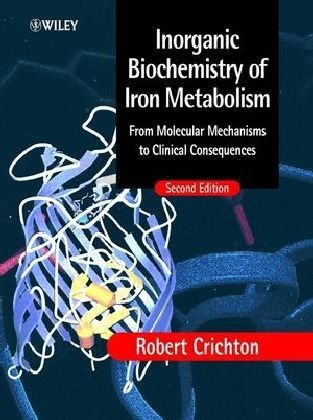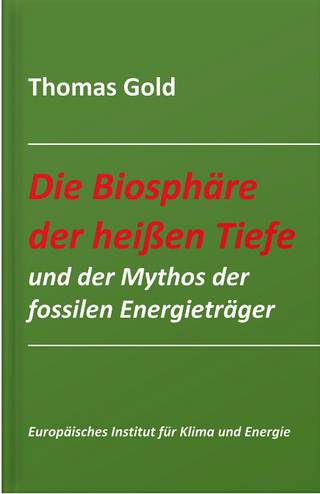
Inorganic Biochemistry of Iron Metabolism
John Wiley & Sons Ltd (Verlag)
978-0-471-49223-8 (ISBN)
- Titel ist leider vergriffen;
keine Neuauflage - Artikel merken
Iron is of fundamental importance for the growth, development and well being of almost all living organisms. Multiple biological systems have been developed for the uptake, utilisation, storage and homeostasis of iron in microbes, plants and mammals. e.g. Both iron deficiency and iron overload are found extensively in man: the intimate links between iron and oxidative stress are associated with a wide range of pathologies; iron has a well established role in infections by a wide range of microorganisms and parasites; there is a close link between iron requirements and cellular division with implications for cancers and other metals such as copper and zinc are closely linked with iron metabolism. The first edition of this book was published in 1991 and since then the extensive impact of molecular cell biology on the field of iron biochemistry has opened new horizons in our understanding of the transport and storage of iron and of its homeostasis. The explosive use of molecular biological techniques applied to cellular biology of iron metabolism has resulted in a rapid expansion in the literature that has led to the need for this second edition.
This collaboration between five specialist authors covers the fundamental concepts and applied aspects of iron biochemistry. Completely updated it reflects the latest advances in the field and now includes new chapters on iron and cell division and the interactions of iron with other metals.
Exploring the chemistry, biology, biochemistry, physiology and medical aspects of iron in biological systems from microorganisms to man this essential title: Introduces illustrations and colour photos to make the basic concepts far clearer Includes new chapters on iron and cell division and interactions of iron with other metals - particularly copper and zinc Provides additional anecdotes Incorporates an extensive and up-to-date bibliography Covers both fundamental and applied aspects Inorganic Biochemistry of Iron Metabolism: From Molecular Mechanisms to Clinical Consequences, 2nd Edition is therefore essential to researchers interested in iron in the areas of: Biochemistry Molecular Biology Microbiology Cell Biology Nutrition and Medical Sciences University lecturers of: Bioinorganic Chemistry Inorganic Chemists interested in Biochemistry Biochemists with an interest in iron metabolism Health professionals with an interest in iron metabolism diseases Pharmacologists in drug companies interested in developing novel iron binding drugs
Solution Chemistry of Iron in Biological Media. Aqueous Solution Chemistry of Iron. Oxygen Free Radicals. Iron Hydrolysis - A Ubiquitous Phenomenon. Hydrolysis of Iron (III) in Acid Media - Formation of Polynuclear Species. Formation of Precipitates. Biomineralization. References. The Importance of Iron for Biological Systems. Introduction. Physical Techniques for the Study of Iron in Biological Systems. Haemoproteins. Iron-Sulfur Proteins. Other Iron-containing Proteins. References. Microbial Iron Uptake. Introduction. Siderophores. Ferrous Iron Transport Sytems. Iron Metabolism. Iron Regulation in Bacteria - the Fur Protein. Acknowledgements. References. Iron Uptake by Plants and Yeast. Iron Acquisition by Plants. Plant Ferritins. Iron Acquisition by Yeast. Intracellular Iron Metabolism. Iron Transport in Other Fungi. References. Cellular Iron Uptake in Mammals. The Transferrins. Iron Uptake by Mammalian Cells - Uptake of Transferrin-bound Iron. Iron Uptake by Mammalian Cells-Uptake of Non-transferrin Bound Iron. References. Intracellular Iron Storage and Biolmineralization. Biominerlaization. References. Intracellular Iron Metabolism and Cellular Iron Homeostatasis. Intracellular Iron Metabolism. Metal Ion Homeostasis. References. Iron Absorption in Mammals with Particular Reference to Man. Iron Metabolism in Man: An Overview. Sources of Dietary Iron in Man and the Importance of Luminal Factors. Molecular Mechanisms of Mucosal Iron Absorption. A Model of Iron Uptake and Regulation of Iron Homeostasis by the Enterocyte. References. Pathophysiology of Iron Deficiency and Iron Overload in Man. Introduction: Acquired and Genetic Disorders of Iron Metabolism. Body Iron Regulation. Iron Absorption in Disorders of Iron Metabolism. Iron Deficiency. Iron Overload. Conclusion. References. Iron and Oxidative Stress. Introduction. Iron and Fenton Chemistry. Importance of Cytoprotection. Importance of Cell Type in Response to Oxidative Stress. Natural Resistance-associated Macrophage Protein (Nramp1). Ageing of Cells. Cell Signalling and Iron. Apoptosis. Relationship Between NFKB and NO. How Does NO and H2O2 Affect the Iron Regulatory Proteins IRP-1 and IRP-2 Diseases in which Increases in Iron may be Associated with Increased Oxidative Stress in the Cell. Diseases in which Iron Plays and Important Role. Neurodegeneraative Diseases. References. Iron and Infection. Introduction. Microbial Strategies to Overcome the Iron-withholding Imposed by the Host, and its Potential Clinical Consequences. The Impact of Chronic Inflammation/Infection on Iron Metabolism. The Role of Iron-related Genes on the Risk and Outcome of Infection. Can Iron Depletion be Applied to Combat Infection? References. Interactions between Iron and other Metals. Introduction. Interactions Between Iron and Essential Metals. Iron and Toxic Metals. References. Concluding Remarks. References. Index.
| Erscheint lt. Verlag | 30.8.2001 |
|---|---|
| Zusatzinfo | illustrations, colour photographs, bibliography |
| Verlagsort | Chichester |
| Sprache | englisch |
| Maße | 192 x 248 mm |
| Gewicht | 930 g |
| Einbandart | gebunden |
| Themenwelt | Naturwissenschaften ► Biologie ► Biochemie |
| Naturwissenschaften ► Chemie ► Anorganische Chemie | |
| Naturwissenschaften ► Chemie ► Organische Chemie | |
| ISBN-10 | 0-471-49223-X / 047149223X |
| ISBN-13 | 978-0-471-49223-8 / 9780471492238 |
| Zustand | Neuware |
| Haben Sie eine Frage zum Produkt? |
aus dem Bereich


